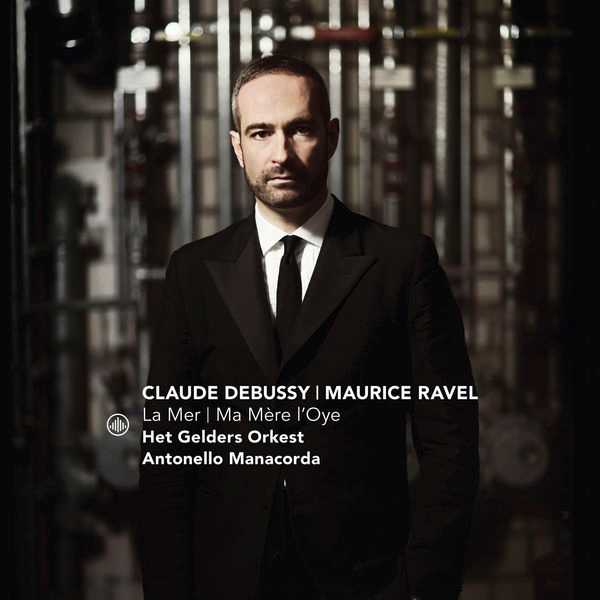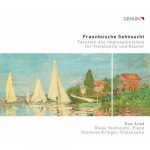

Composer: Claude Achille Debussy, Maurice Ravel
Orchestra: Het Gelders Orkest
Conductor: Antonello Manacorda
Format: FLAC (tracks)
Label: Challenge Classics
Catalogue: CC72757
Release: 2018
Size: 455 MB
Recovery: +3%
Scan: yes
Debussy: La Mer
01. I. De l’aube à midi sur la mer
02. II. Jeux de vagues
03. III. Dialogue du vent et de la mer
Ravel: Ma Mère l’Oye
04. I. Prélude. Très lent
05. II. Danse du rouet et scène. Allegro
06. III. Pavane de la Belle au bois dormant. Lent
07. IV. Les entretiens de la Belle et de la Bête. Mouvement de Valse. Modéré
08. V. Petit Poucet. Très modéré
09. VI. Laideronnette, impératrice des pagodes. Mouvement de marche
10. VII. Apothéose. Le jardin féerique. Lent et grave
The bulk of La mer was composed during a visit to Burgundy – a long way from the nearest sea – although the work was completed in the English seaside town of Eastbourne. The composer himself argued that his inspiration was drawn from a range of ocean view paintings and from literature in which the sea played a major part. Debussy described the work as ‘Three symphonic sketches for orchestra’ (Trois esquisses symphoniques pour orchestre), thus avoiding the term ‘symphony’, which would have imposed a specific musical structure, as well as the expression ‘symphonic poem’, which would imply that the music was descriptive in nature. ‘Sketches’ was a wise choice, precisely because it neatly conveys that the music is meant to do no more than provide an impression.
Whereas Debussy occupied himself spontaneously and intuitively with looking for new sounds, Ravel placed much more emphasis on the effect that the sounds could have in the context of a musical story.
One of these dazzling impressionist tales was the suite Mother Goose (Ma mère l’Oye). Between 1908 and 1910, he wrote a simple suite of piano pieces for four hands for the children of some friends, inspired by a few fairy tales that he took in part from the Tales of Mother Goose by Charles Perrault. Albeit the music was not technically difficult, the subtlety of the sound and melodies imbued the work with extreme refinement. This became clearly evident when he subsequently arranged to work for orchestra, refining the music even further with the larger orchestral sound palette. Ravel used this orchestral version in 1912 for a ballet.



